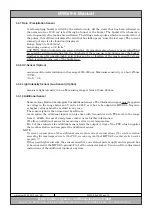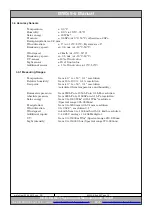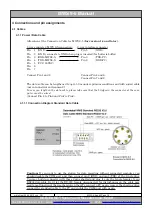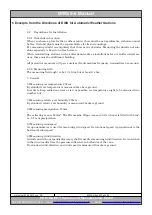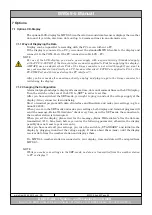
MWS 9-5e.p65 Page 22
MWS 9-5 Manual
erstellt am 30.05.2012 von DO
REINHARDT
System- und Messelectronic GmbH
Fax: 08196/7005 and 1414 email:
Web:
www.reinhardt-wetterstationen.de
5 Excerpts from the Directions of DWD for Automatic Weather Stations
....
2.2 Regulations for Installation
2.2.1 Demands on Location
When you choose a place for the weather station, there must be no impediments, its horizon must
be free. Soil and plants must be representative for its surroundings.
For measuring wind it is compulsory that there are no obstacles. Measuring the duration of sun-
shine especially is based on a free horizon.
When transmitting stations such as directional radio or installations for air traffic control are
near, there must be additional shielding.
...
All preventive measures will prove useless if radio medium frequency transmitters are around.
2.2.2 Measuring field
The measuring field ought to be 10 x 10m, but at least 6 x 6m...
3. Sensors
3.1 Measuring air temperature 200cm
By standard, air temperatur is measured 2m above ground...
In order to keep radiation errors as low as possible, air temperature ought to be measured in a
weather hut...
3.4 Measuring relative air humidity 200cm
By standard, relative air humidity is measured 2m above ground...
3.5 Measuring precipitation 100cm
...
The collecting area is 200cm
2
. The Hornersche Wippe (see-saw) tilts when it is filled with 2cm
2
,
i.e. 0.1 mm precipitation.
3.7 Measuring windspeed
A cup anemometer is used for measuring wind speed. Its rotational speed is proportional to the
horizontal wind speed.
3.8 Measuring wind direction
A wind vane with a perpendicular rotary shaft is used for measuring wind direction. Its orientation
in the wind results from the pressure difference on both sides of the vane.
By standard wind direction and wind speed is measured 10m above ground.






